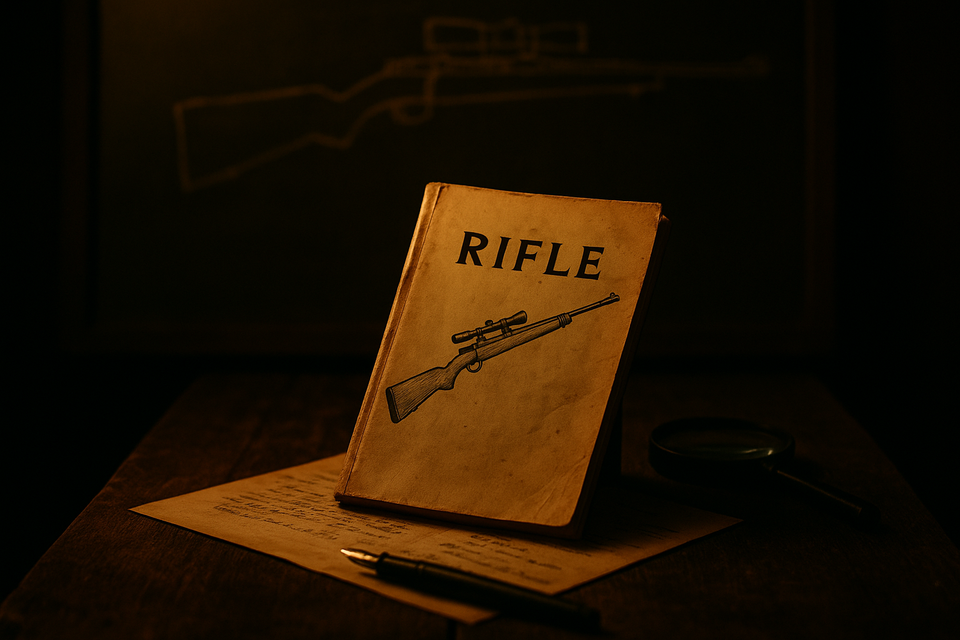One Rifle to Do It All: Jeff Cooper’s Scout and the Lost Art of Specification

An unexpected parable in steel, balance, and product clarity.
“The natural enemy of the Scout Rifle concept is ignorance.”
— Jeff Cooper
Introduction: A Forgotten Chapter in Systems Thinking
This could have been a lost chapter from Gears, Triggers, and Systems. In a world saturated by technical frameworks, methodologies, and solutions in search of problems, Jeff Cooper’s Scout Rifle stands out as a masterclass in constraint-driven design. Though not an engineer nor a product manager, Cooper exhibited more product clarity and systemic integrity than most modern teams ever reach.
This article is not about firearms. It is about how to specify with purpose, how to preserve clarity of outcome, and how only one valid implementation may emerge when the specification is right.
The Man Before the Specification
Jeff Cooper was no product manager. He was a Marine, a marksman, a writer, and a teacher. But above all, he was a man of focus, sharp in aim, and even sharper in thought. Anyone who has watched his instructional videos can sense it: the clarity, the precision, the refusal to waste time or words.
This is why he defined the specification correctly.
Not because he followed a process, but because he started with purpose.
He stated the problem. He framed the context. He applied discipline.
And from that, the Scout Rifle was born.
Not a Gun, But a Concept
Cooper did not attempt to invent a new firearm. He crafted a specification for a system, grounded in outcome and use.
He described a tool for the lone rifleman: someone who required a single, lightweight, fast, accurate, and versatile weapon. Something useful in the wilderness, in defence, in pursuit, and in survival.
It had to:
- Weigh under 3 kg (approximately 6.6 lbs)
- Be under 1 metre in length
- Be accurate to 2 MOA
- Allow rapid first and follow-up shots
- Use a forward-mounted, low-power scope for both-eyes-open targeting
- Include backup iron sights
- Chamber a general-purpose calibre capable of dropping large game
- Support a functional sling and spare ammunition on the gun itself
These were performance constraints, not parts lists.
And that is where most manufacturers failed.
Defining the Outcome, Not the Input
Cooper did not say: use a Steyr action, mount a Leupold scope, or choose a synthetic stock.
He said: solve this field problem within these physical, operational, and ballistic constraints.
This is product design at its highest level.
It speaks in function and mission, not in components.
Many brands copied the silhouette of the Scout Rifle, but missed its intent. Too heavy. Too long. Incorrect optics. Poor balance. The soul was absent.
Only Steyr, working directly with Cooper, succeeded. Their Scout Rifle remains the only true model to embody both specification and spirit.
A Specification that Shoots Straight
Most modern specifications fail because they skip the hard part: clarity of purpose.
Today we define:
- APIs without understanding use cases.
- Interfaces without appreciating context.
- "Product specifications" that read like feature dumps, not problem definitions.
Cooper's Scout Rifle demonstrates the opposite: start with the user, the environment, and the constraints. Define the outcomes. Then allow the implementer to build freely provided those constraints are honoured.
This is how platforms should be built. This is how real product thinking should function.
A good specification does not tell you what to build.
It tells you what must not be broken.
With an interesting mapping exercise:
| Scout Rifle Constraint | Equivalent in System Design |
|---|---|
| Under 3 kg | Lightweight, low-latency system |
| Forward optic | Fast path to insight or visibility |
| Backup iron sights | Resilience and fallback mechanisms |
| One rifle for all tasks | General-purpose, modular service |
Echoes in Modern Product Failures
Consider how many product teams fail the Scout Rifle test:
- Microservices built without boundaries or load models.
- Feature factories deploying change without purpose.
- Platform teams overwhelmed by reactive ticket queues, blind to strategic enablement.
These are the anti-Coopers. They copy the form. They forget the function.
Cooper's strength was not mechanical. It was philosophical.
He began with the right question and never lost sight of it.
A Legacy of Discipline
Cooper never sold the Scout Rifle as a commercial gimmick. He taught it. He challenged others to test it. He documented why each component mattered.
He was not in love with the rifle. He was in love with fitness to purpose.
That is what modern engineering must reclaim.
In a world bloated by overbuilt architectures and shallow interpretations, Cooper left a map. He showed what it means to start with discipline, define the problem, and remain true to the mission.
And sometimes, if one does it correctly, only one implementation on Earth will ever truly qualify.
The best specifications are not blueprints. They are ideals. And only those who understand them can deliver them.
Are you writing specifications like Cooper or are you just listing parts?





Member discussion